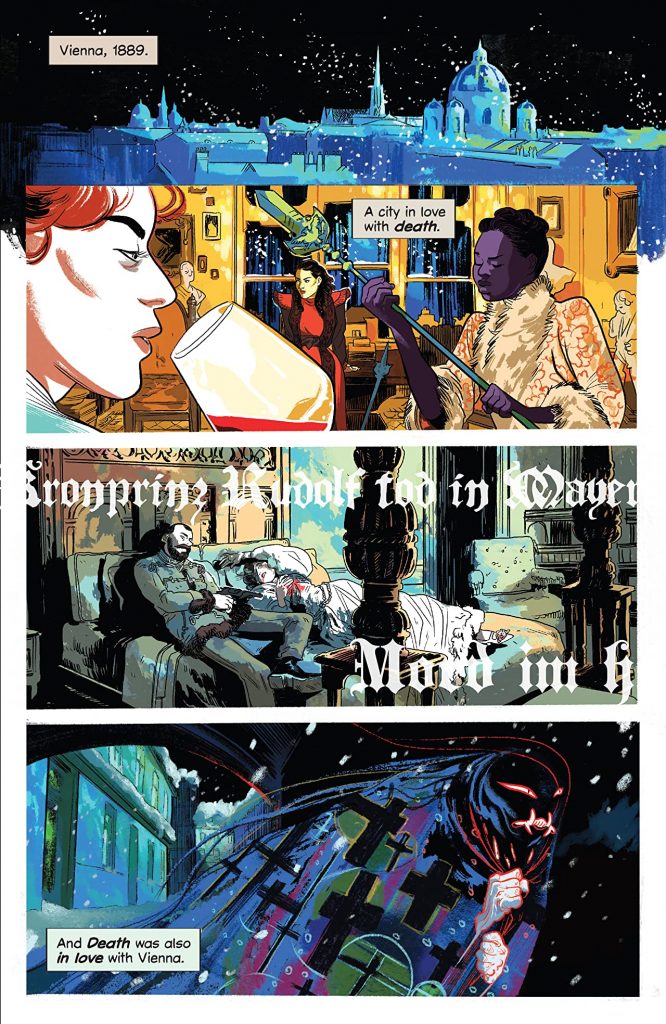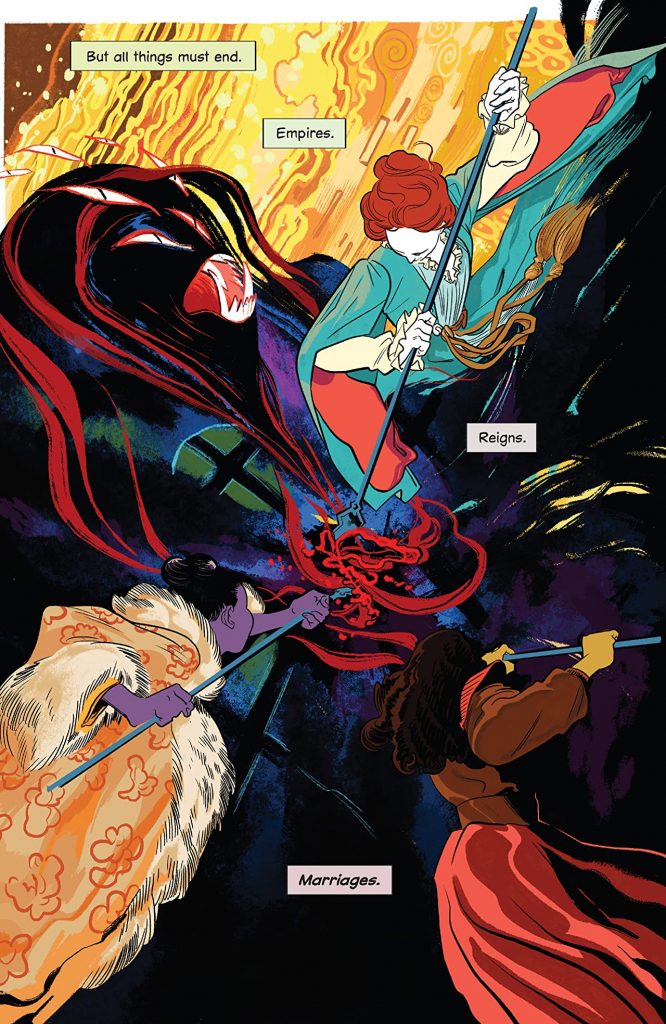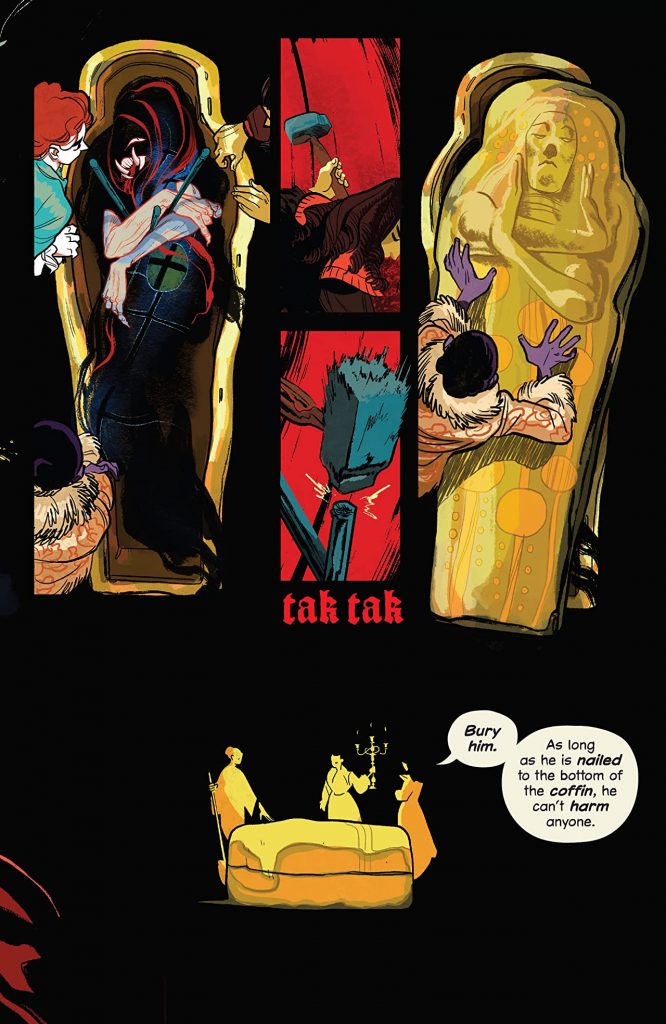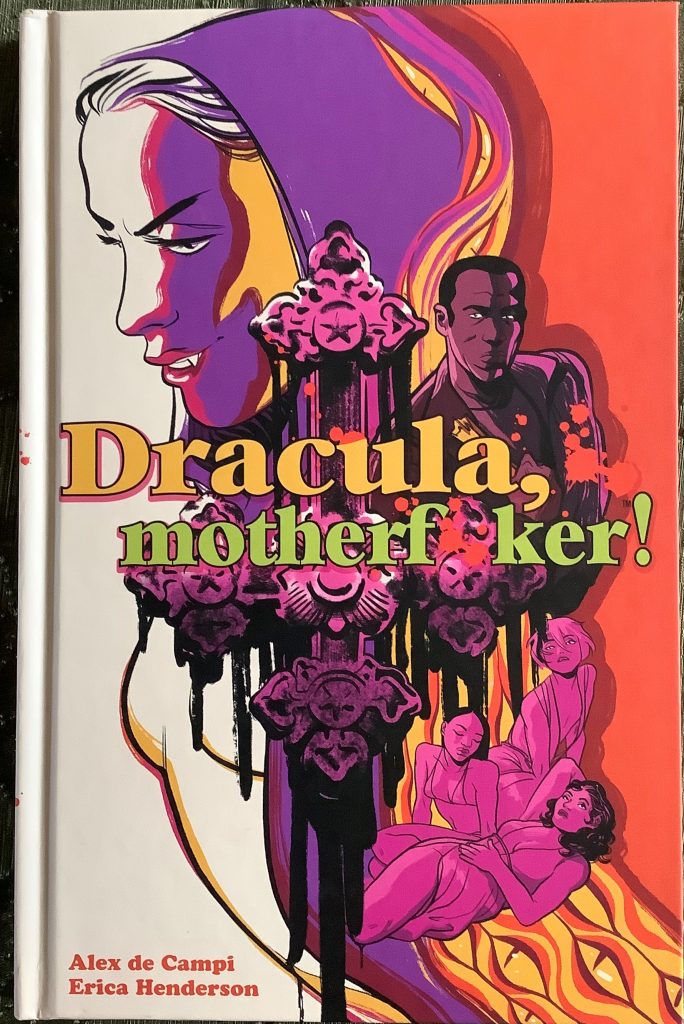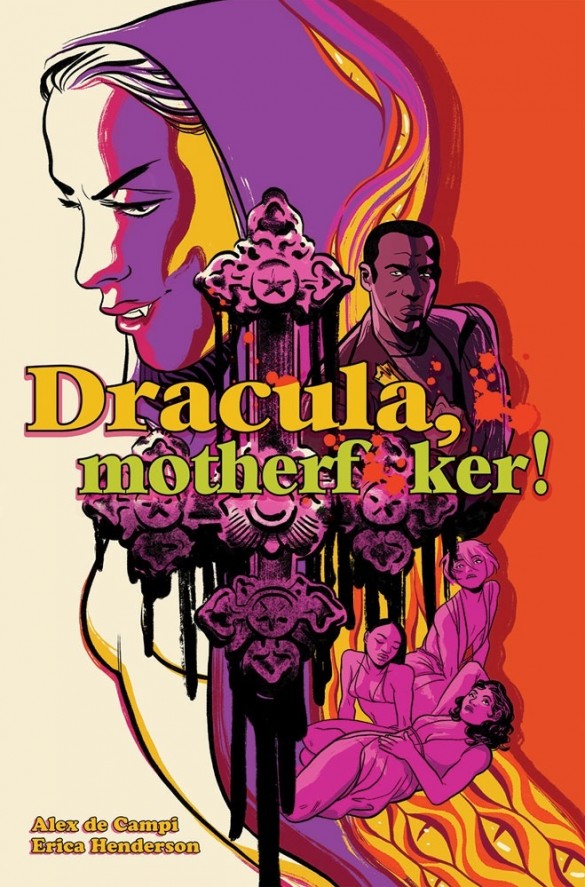
- Dracula, Motherf**ker!
- Image Comics
- By Alex de Campi & Erica Henderson
- Available now, in print & digital
Vienna, 1889
Tired of the games, the manipulations, the constant reminders that they’re not in control of their undeath, the Brides of Dracula- Marishka, Aleera, & Verona- join together and declare their collective marriage annulled. Together, they overcome the beast and leave him nailed to the bottom of his coffin, buried where he can’t do anyone any harm again. All they have to do now is anything & everything they’ve ever wanted, and they have all the time in the world to do it.
Los Angeles, 1974
Tired of the games, the manipulations, the constant reminders that she’ll never be as young as she used to be, film star Bebe Beauland follows the whispers. She’s heard the promises and believes that he can give her everything she’s ever wanted. All she has to do is anything & everything he says, and she’ll have all the time in the world to do it.
Enter crime scene photographer Quincy Harker. See, a long time ago before anyone had an idea of what a smartphone might be, taking a picture took a little more forethought than just dipping into the pocket, snapping a selfie, and tossing it out into the cloud. A person who made a living taking pictures at crime scenes had to be in the right place at the right time. Quincy Harker’s place in this story is the chronicler. Stumbling onto the scene of a brutal mass murder- including that of Bebe Beauland, in fact- Harker thinks he’s looking at a huge payday. His problems only start when Bebe gives a press conference the next day, complicating Harker’s story of the slain Hollywood actress. When the Brides step in to keep Quincy safe, it’s a question of whether he’s going to be prey or bait.

Sometimes writing up a review isn’t easy. I’ll read a book, and no matter how great I think it is, the angle for the review isn’t always obvious. Thankfully, I’ve always been that guy who reads the forwards & the afterwards in these books. It’s interesting to me, taking a look behind the curtain to get some insight into how the creators of the comics I read approach a story. So it wasn’t much of a leap to find myself reading Alex de Campi’s entry into the continued story of the Brides.
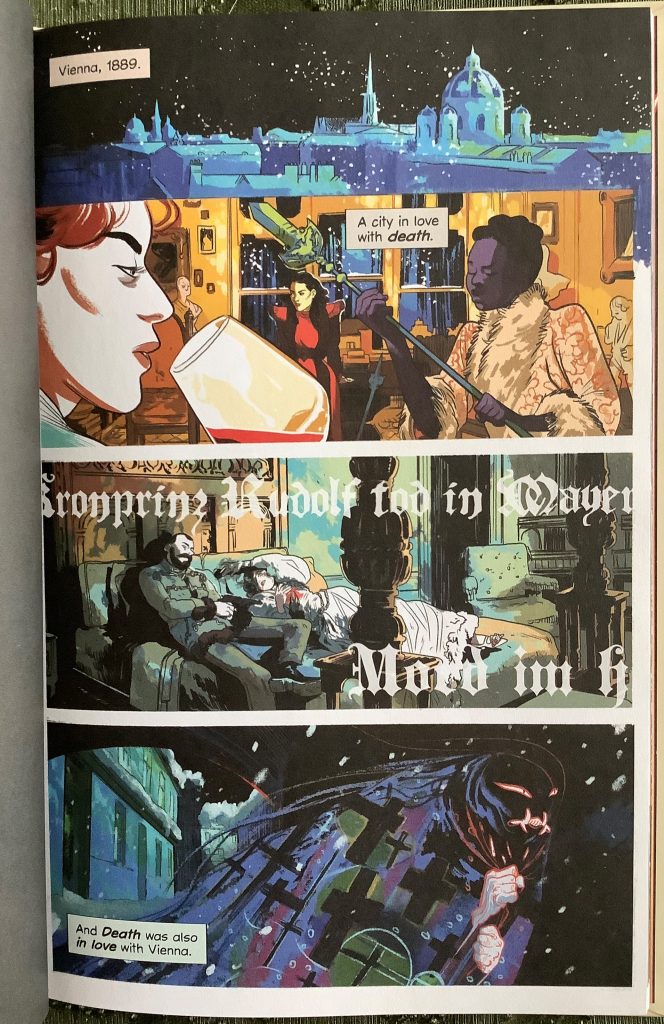
First off, make no mistake that this is the Brides’ story more so than the oft-portrayed undead stereotype of a Count. De Campi’s first step into the idea was in determining that Dracula shouldn’t be a dashing, attractive individual. In her words, “Oh, it’s easier if he’s pretty. Then it’s love; these poor maids who are his victims take one look at his face and can’t believe something so evil could look so nice.” So here, ol’ Vlad is more of a looming presence. He’s a force both felt and feared, as inevitable as the ocean’s tide… or so he’d like you to believe. Well before the Clown Prince of Crime gaslit an impressionable young psychiatrist, Drac was taking names & collecting young women to serve as his “brides”. Anyone who’s ever heard the words “this time it’ll be different,” or “you’ve always been my favorite,” or “what would you be without me?” should sit up and take notice of this book. As the Brides can attest, once you start down that particular rabbit hole, you’re going to get lost if you don’t stop digging.

The second piece of the puzzle for this book is in the setting, The City of Angels in the mid-70’s. On the surface it’s been called the city of hopes & dreams. Go a little deeper you find out that it’s a city of strangers. People go to Los Angeles to “be discovered”, to “make it”. There are relatively few born and raised Angelinos in the population, which is a great thing when you look at the complexity and diversity of the city’s culture. It might also be a huge benefit to an undying creature of legend looking to cull the herd and go unnoticed. People disappear all the time, coming and going as they hunt for fame and fortune, and only occasionally falling prey to life draining supernatural entities. A canny predator could make themselves at home in a place like that for a quite a while. The city, paired with the chaotic times following the Vietnam War, makes a perfect setting for the kind of story de Campi is going for.
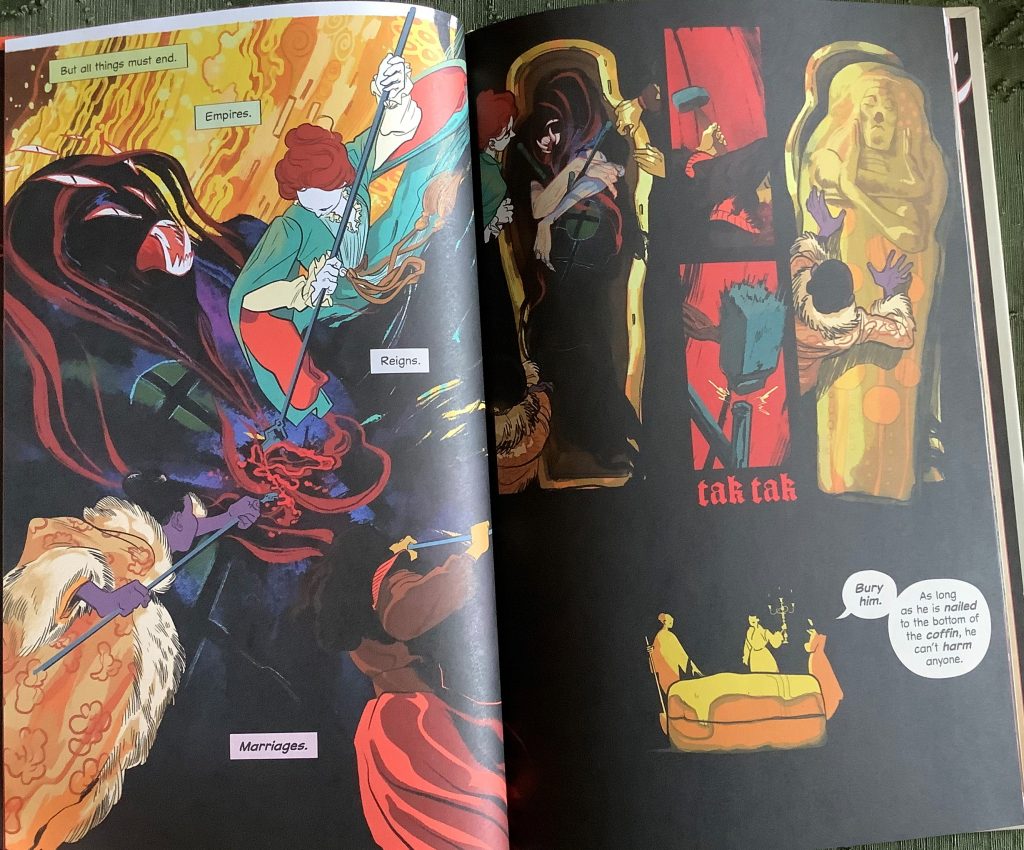
A different kind of take on Stoker’s classic calls for a different approach to the visuals, and it was interesting to see how artist Erica Henderson approached the work. I’ve been reading comics for a long time- almost since this particular story takes place, as a matter of fact- and there’s a tendency to lose track of the “how” when we’re talking about something we’ve been doing as a matter of course for so long. Henderson’s breakdown of how she came at Dracula, Motherf**ker started with an explanation of how our eyes take in a comic, seeing the big picture first. After turning the page, a comic reader sees the two-page spread, then a single page, and only then focusses in on individual panels, and it all happens so fast that we’re not even aware there’s a process involved. With that in mind, Henderson went at each two-page spread as a single piece, using panel arrangements & color schemes to carry the reader along and always saving a big reveal for the turn of the page.
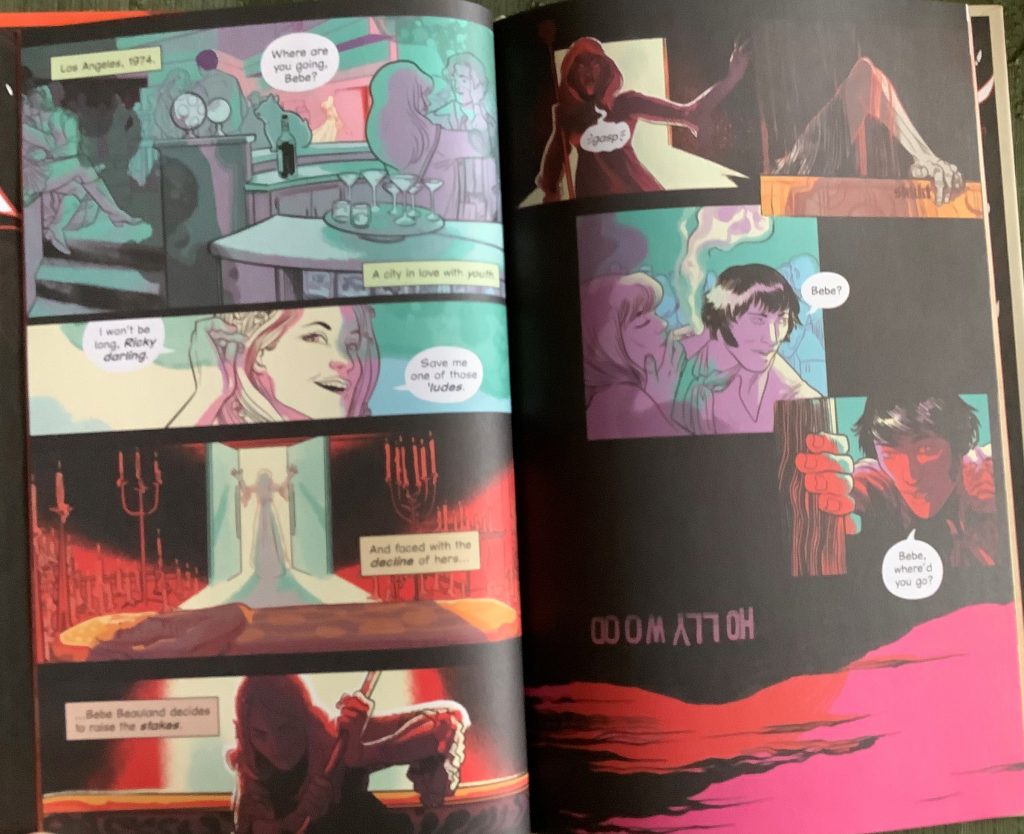
Holding to the idea behind the story, Henderson leaned hard into the concept of Dracula as more of an abstract force than a person. The pages featuring the Lord of the Vampires are more amorphous and less linear than the rest of the book. Even the vampire’s dialogue breaks out of tried & true word balloons to scrawl across the page, worming its way into the reader’s mind just like his victims’. Her ability to orchestrate the flow of spread to page to panel also let her break away from the need to stick to a specific color palette for a scene. Breaking the book into spreads let Henderson really play around, tailoring everything to set the mood for a two page piece instead of trying to construct it all from the panel out- and going back to read this book again I realized just how that ideal impacts the story- gave me the sense of a more cinematic experience for me.
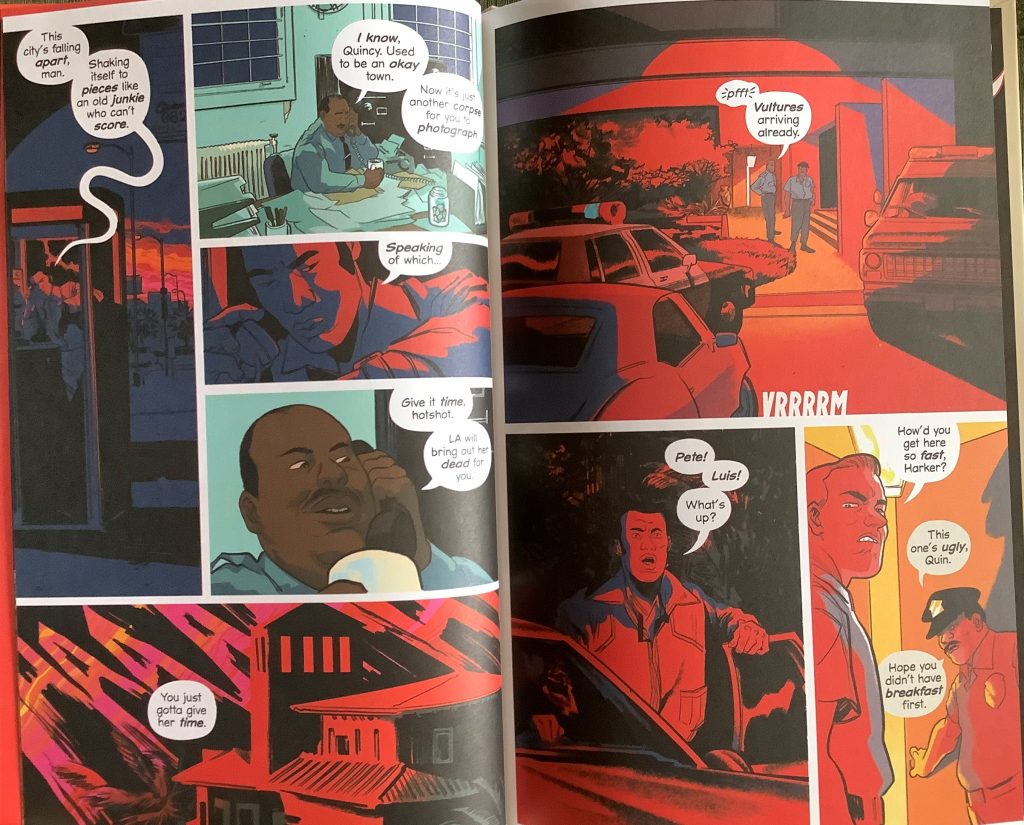
None of the individual factors that went into the crafting of Dracula, Motherf**ker! would have carried half of the impact without the close collaboration between writer and artist. There really isn’t a clear starting or stopping point between script & illustration, something that’s driven home when you notice that the book is credited to Alex de Campi & Erica Henderson, without the “created by”, “written by”, or “illustrated by” tags that usually accompany.
Nothing about this book- inspired by 70’s exploitation flicks, Japanese artwork, and late 60’s psychedelia- fits into the traditionally tidy slots readers might be used to. The result is a visually impressive, thematically layered, unconventional piece of work that should be read by every individual who believes that they know vampires. Or anyone who just wants to see how unique the experience of reading a comic book can be when creatives throw it all out there and break the rules. Or anyone interested in seeing how a Dracula story that isn’t really about Dracula might look.
I picked this one up on a whim, and now having read it three times I have not a single regret to give. I don’t really know how else to sell it to my tens of readers. Step up and have your expectations challenged.
Final Score: 12/13
